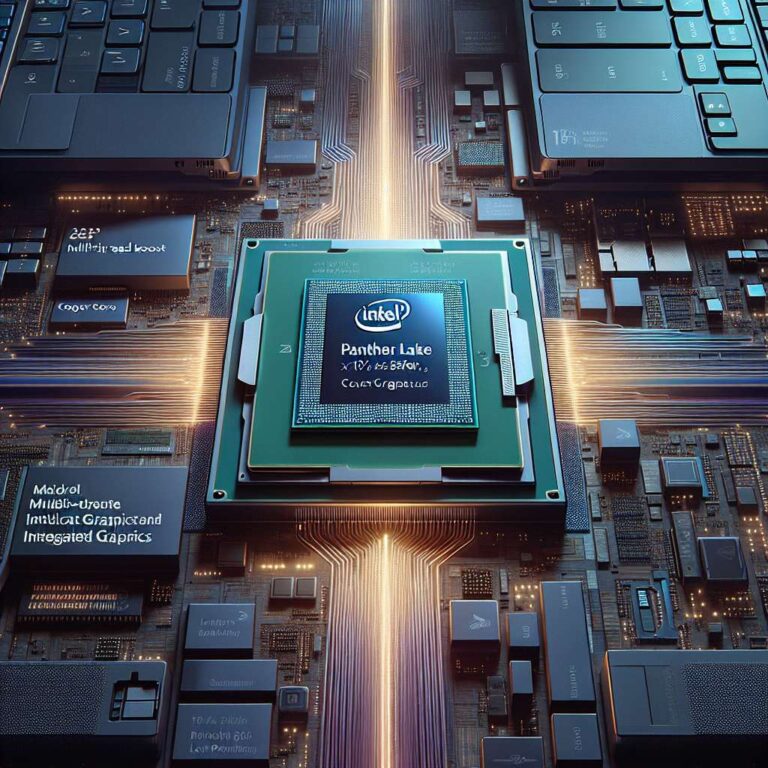Intel is positioning Panther Lake as a decisive comeback moment, uniting the raw performance gains of Arrow Lake with the efficiency strides of Lunar Lake on the new 18A manufacturing node. Built on a modular system of chips rather than a single system on a chip, Panther Lake combines next generation Cougar Cove performance cores with Darkmont efficiency and low power efficiency cores. Intel is targeting laptops in 2026 and, in like for like power scenarios, claims more than 50 percent higher multi thread performance versus Lunar Lake and Arrow Lake. The company also cites a single thread option that is more than 10 percent faster at similar power, or similar single thread speed at more than 30 percent less power compared to Arrow Lake.
The 18A node underpins these gains with two major technologies. RibbonFET wraps gate control fully around the transistor for tighter leakage control, which Intel quantifies as a 15 percent performance per watt increase with a 25 percent power reduction. PowerVia moves power delivery to the backside of the wafer, freeing signal routing on the front and lifting overall density by 1.3 times. On the platform side, configurations scale up to 16 cores, support faster LPDDR5x memory up to 9600 MT/s, and include Wi Fi 7, Bluetooth 6.0, and Thunderbolt 4. A fifth generation NPU delivers 50 TOPS, and when combined with CPU and GPU accelerators totals 180 TOPS for on device Artificial Intelligence tasks. Intel says the NPU uses 10 percent less power than Lunar Lake and 40 percent less than Arrow Lake, and is tuned for modern workloads such as floating point.
Graphics see the largest leap. The new Xe3 architecture scales to 12 Xe cores and 12 ray tracing units with a larger 16 MB L2 cache at the high end. Intel claims more than 50 percent higher GPU performance versus Lunar Lake and 40 percent better performance per watt compared to Arrow Lake H. XeSS adds multi frame generation, where the GPU renders one frame and uses Artificial Intelligence to predict the next three, and Intel is guiding to a 1.5 times uplift in gaming. In 45 watt demos, integrated graphics pushed Painkiller to 220 FPS and Dying Light 2 to 140 FPS, and the added ray tracing units aim to address past integrated ray tracing weaknesses. Competitive results against AMD’s Strix Halo were not available, and the author frames Panther Lake as a value oriented upgrade rather than a direct rival to the most extreme APUs.
Quality of life features round out the platform. The IPU 7.5 image processor brings better webcams up to 16 MP stills and 1080p at 120 FPS, plus Artificial Intelligence tone mapping, noise reduction, and more efficient, hardware accelerated staggered HDR. Intel says Panther Lake is being built at Fab 52 in Phoenix, Arizona, and early impressions from curated demos are promising. If the shipped silicon matches these claims, the blend of higher efficiency, stronger integrated graphics, and modern on device Artificial Intelligence could reshape mainstream laptops, handhelds, and mini PCs when systems arrive in 2026.

